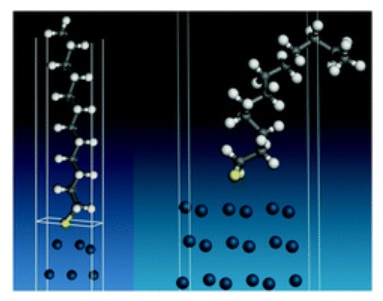Publications
Table of Contents (TOC)
The Adsorbed State of a Thiol on Palladium Nanoparticles
Physical Chemistry Chemical Physics, 2016, 18 (26), 17265-17271. DOI: 10.1039/C6CP00957C
Abstract
In the present work, a combination of imaging, spectroscopic, and computational methods shows that 1-dodecanethiol undergoes S-deprotonation to form 1-dodecanethiolate on the surface of palladium nanoparticles, which then self-assembles into a structure that shows a high degree of order. The alkyl chain is largely in the all-trans conformation, despite the small size of the nanoparticles (mean diameter = 3.9 nm). Inelastic neutron scattering spectroscopy readily characterizes organic surface layers on nanoparticles; the nature of the material is irrelevant—whether the nanoparticle core is an oxide, metal, or semiconductor makes no difference. Comparison to DFT calculations allows insights into the nature and conformation of the adsorbed layer.
For citation:
Rogers, M. S.; Dimitratos, N.; Jones, W.; Bowker, M.; Kanaras, A. G.; Wells, P. P.; Catlow, R. A.; Parker, S. F.
"The Adsorbed State of a Thiol on Palladium Nanoparticles"
Phys. Chem. Chem. Phys. 2016, 18 (26), 17265-17271. DOI: 10.1039/C6CP00957C